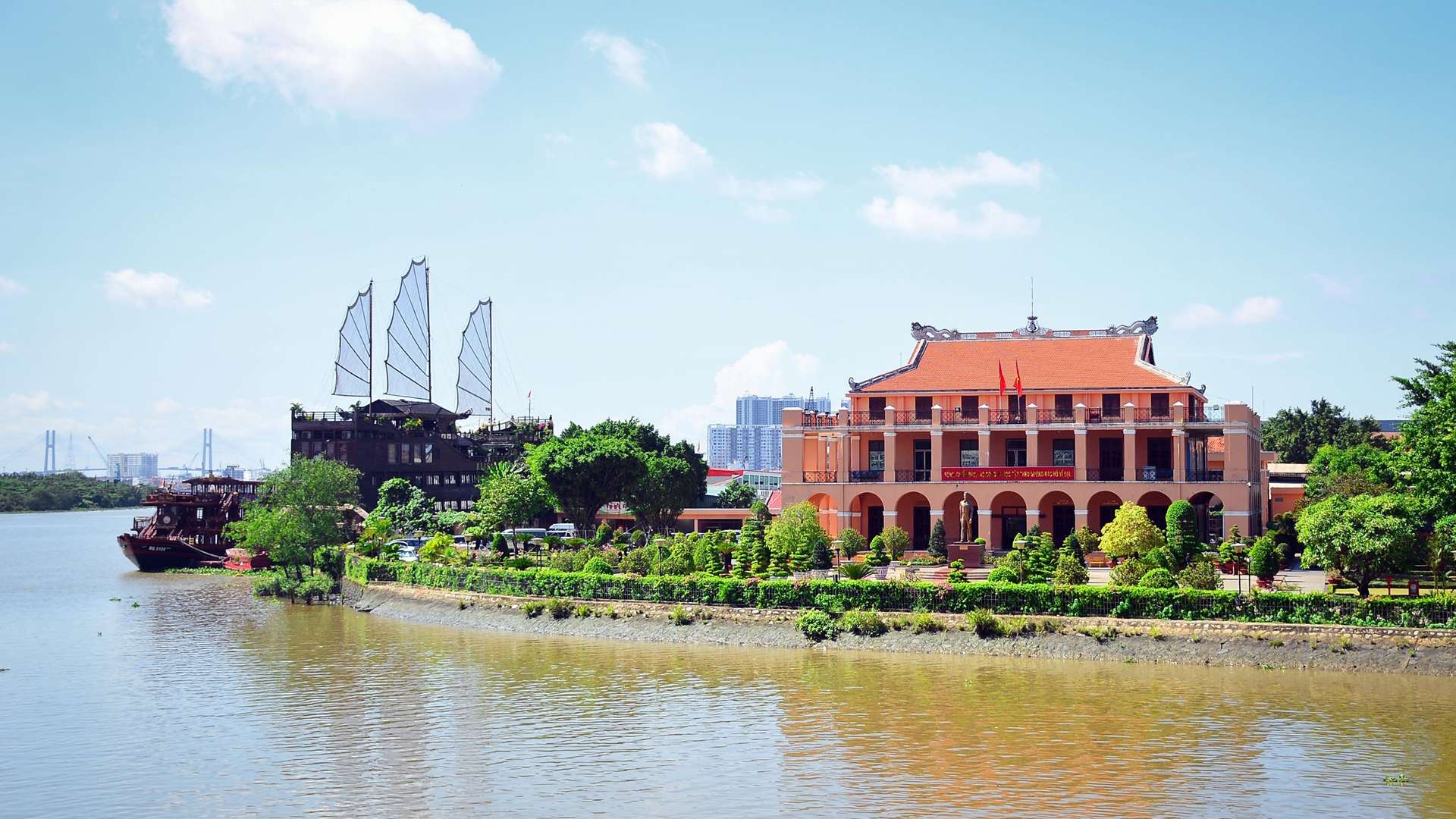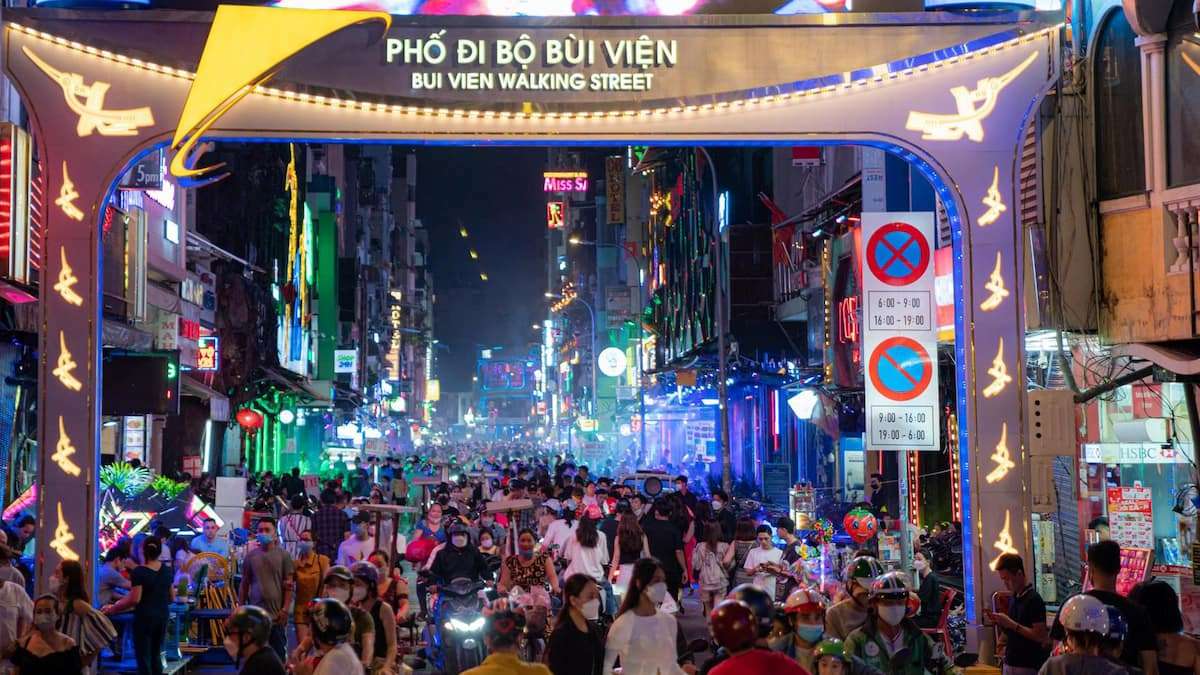The Independence Palace is not only an architectural masterpiece but also a powerful symbol of peace and reunification in Vietnam. It stands as one of the most visited landmarks in Ho Chi Minh City, especially during Vietnam’s Reunification Day on April 30.

The palace was constructed on July 1, 1962, based on a design by renowned Vietnamese architect Ngô Viết Thụ—the first Vietnamese to win the prestigious Grand Prix de Rome. The entire layout of the building follows the shape of the Vietnamese character “Cát” (吉), which symbolizes good fortune and prosperity. Architecturally, the most distinctive feature is the stone floral facade resembling bamboo joints, encircling the second floor to create an elegant, serene appearance. Inside, the design emphasizes clean lines and geometric clarity, reflecting a sense of discipline and solemnity.
The palace spans 20,000 square meters of floor space, built on a 4,500 square meter plot. It stands 26 meters tall, consisting of a ground floor, two mezzanine levels, two basements, and a helipad on the rooftop. There are over 100 functional rooms, each designed with a unique style, including the State Banquet Hall, Cabinet Meeting Room, Presidential and Vice Presidential Offices, Credentials Presentation Room, and Grand Dining Room.

The Credentials Presentation Room was where ambassadors from various countries once came to present their letters of credence to the President of the Republic of Vietnam before 1975.
The room’s interior was designed by artist Nguyễn Văn Minh, featuring lacquer art as the primary technique, influenced by Japanese style. The focal point of the room is a large lacquer painting titled “Bình Ngô Đại Cáo”, composed of 40 panels, depicting a peaceful Vietnamese scene from the 15th century, with King Lê Lợi at the center declaring victory over the Ming invaders. On both walls, eight symbolic torches are placed and lit during important diplomatic ceremonies.
On April 18, 1975, the final credentials presentation took place in this room, when President Nguyễn Văn Thiệu of the Republic of Vietnam received the credentials of Hiroshi Hitomi, Ambassador Extraordinary and Plenipotentiary of Japan.

Located on the second floor of the palace, the President’s reception area consists of two adjoining rooms. In the first room, the President’s chair is elevated above the others, with a large wooden panel behind it symbolizing the national flag of the Republic of Vietnam. The adjacent room has a simpler layout, with two lacquer cabinets featuring the traditional “plum, orchid, chrysanthemum, bamboo” motifs placed on either side as highlights.
The Vice President’s reception room (pictured later) features a dominant gold tone, reflected in the curtains and furniture. The room displays two lacquer paintings: one depicting the Khuê Văn Pavilion (at the Temple of Literature in Hanoi), and the other illustrating King Trần Nhân Tông on a leisurely outing (13th century).

The Banquet Hall is where formal receptions and banquets were held, with a capacity of over 100 guests. The space features a warm golden color palette, creating a sense of elegance and intimacy. At the center of the room hangs a painting titled “A Magnificent Homeland, Peaceful Nature”, created and gifted by architect Ngô Viết Thụ.
On the evening of March 1, 1975, this hall hosted the last banquet held by President Nguyễn Văn Thiệu for the U.S. delegation.

The basement is one of the most intriguing areas for visitors exploring the Independence Palace. Designed by engineer Phan Văn Điền, it was built with reinforced structure, measuring 72.5 meters in length, 0.8 to 22.5 meters in width, and 0.6 to 2.5 meters in depth. The rooms are connected by narrow concrete corridors, with 5 mm thick steel-lined walls and a dedicated ventilation system.
Zone 1 served as the command center, including the staff office, radio station, telephone switchboard, decoding, and communications room. All the equipment was provided by the U.S. government during the 1960s.
Zone 2 (pictured later) is located 2.5 meters underground with 1.6-meter-thick concrete walls, capable of withstanding the impact of bombs weighing up to 2,000 kilograms. In emergency situations, the President could access this area via a staircase directly connected to the second-floor office. Currently, this area is not open to the public.

As visitors exit the basement, they will see the M151A2 Jeep—the vehicle that once carried President Dương Văn Minh to the Saigon Radio Station at noon on April 30, 1975. There, he delivered the unconditional surrender announcement, officially marking the end of the Saigon regime and ushering in the historic moment of national reunification.

As visitors exit the basement, they will see the M151A2 Jeep—the vehicle that once carried President Dương Văn Minh to the Saigon Radio Station at noon on April 30, 1975. There, he delivered the unconditional surrender announcement, officially marking the end of the Saigon regime and ushering in the historic moment of national reunification.
Opening and closing time
Hours of ticket: 8.00 am – 3.30 pm every day
Hours of visiting: 8.00 am – 4.30 pm every day
Experience of visiting
At the Independence Palace, you will visit three main areas includes: a fixed area, a thematic area, and an additional area to admire the unique architecture, artifacts of historical value, and historical documents.
Besides, the thematic exhibition “From Norodom Palace to Independence Palace 1868 – 1966” in the only hundred-year-old ancient villa left on the grounds of the Independence Palace is also a point worth visiting.
With a new historical interpretation, prominent events in Saigon and South Vietnam in the past are introduced in a concise, multi-dimensional way, helping viewers have a clearer view of the historical period of Independence Palace.




